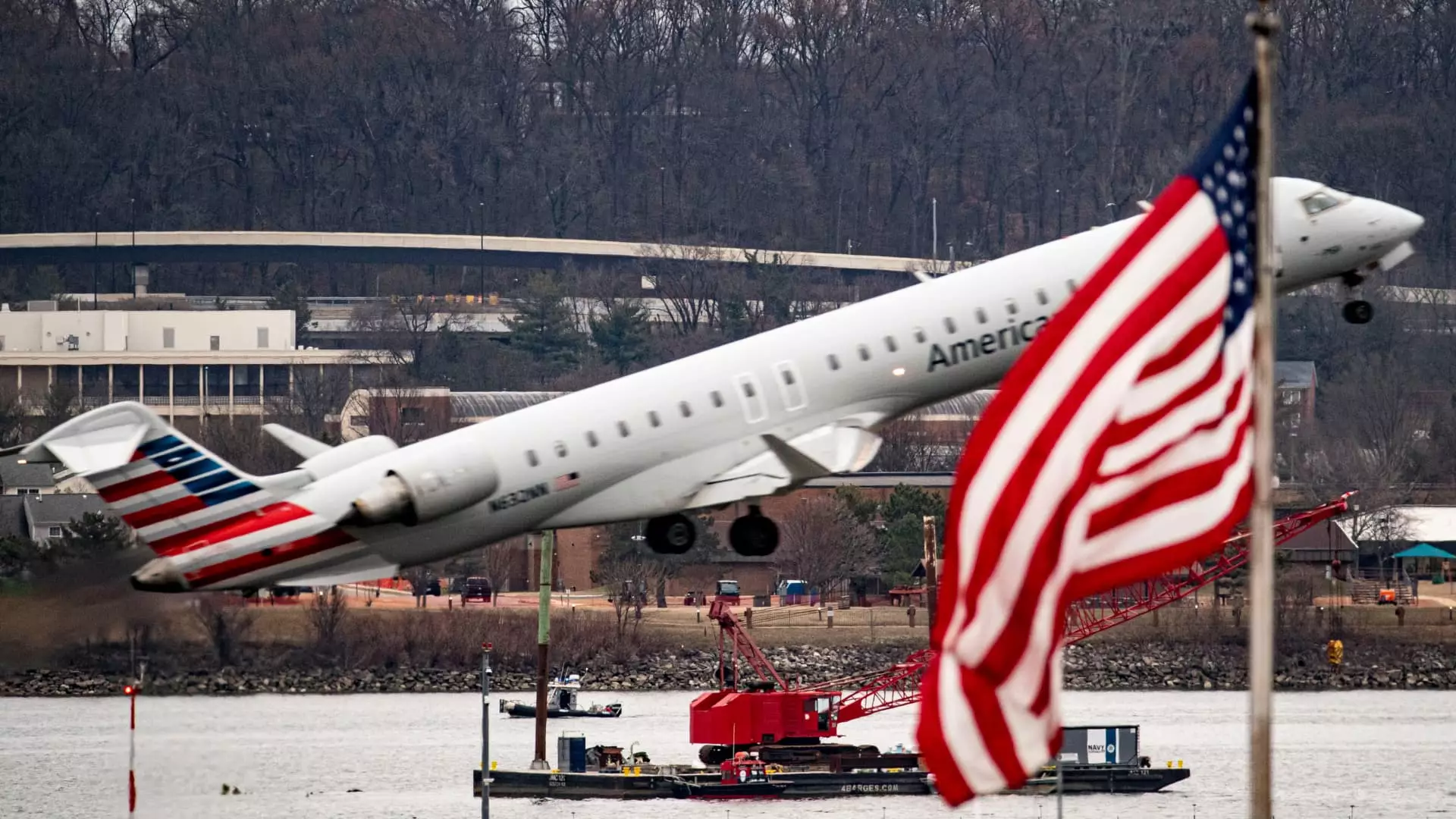In recent weeks, the tragic collision involving an Army Black Hawk helicopter and an American Airlines regional jet has ignited a fierce conversation about airspace management in the United States. As the ramifications of this deadly accident unfold, U.S. Transportation Secretary Sean Duffy is seeking to reform how the nation’s airways are utilized to prevent further tragedies. Duffy’s discussions with prominent figures, such as Elon Musk, highlight the pressing need for innovative solutions to address the complexities of aerial navigation, particularly in congested urban areas like Washington, D.C.
The fatal incident is a stark reminder of the potential dangers that arise when different types of aircraft share the same congested airspace. With 64 passengers on the regional jet and three military personnel aboard the Black Hawk losing their lives, this collision marks not only a personal tragedy for those involved but also a significant event in aviation safety discourse. Since this accident, industry leaders and government officials have urged for substantial changes to air traffic control systems and protocols.
Duffy’s statements reflect a broader urgency to reassess current practices—particularly the decision to have a single air traffic controller manage both commercial flights and military operations during peak traffic periods. This model, susceptible to overwhelming overload, raises concerns about the adequacy of training and operational procedures. Calls for modernization of air traffic control have gained momentum, emphasizing not only the necessity of upgraded technology but also a reinforced workforce capable of handling high-stress situations.
Duffy’s engagement with Elon Musk suggests a strategic pivot towards leveraging technological expertise to recalibrate airspace management practices. Musk, front-running a new initiative dubbed the Department of Government Efficiency, has access to advanced engineering resources capable of revolutionizing the aviation landscape. As industry veterans recognize, the integration of cutting-edge technology could dramatically improve real-time data sharing and air traffic coordination, preventing future mishaps.
However, while tapping into the vast resources available through private enterprises presents promising opportunities, it also mandates a meticulous oversight mechanism to ensure that safety remains paramount. Any reforms recommended must balance innovation against the inherent risks presented by urban air traffic. As Duffy points out, the necessity to re-evaluate military operations within busy airspace is a pressing issue that transcends technological solutions.
One of the more controversial elements of Duffy’s commentary is his critique of military helicopter usage, particularly in situations where alternative transportation is available. By directly addressing the ‘convenience’ of such flights, he opens a dialog about prioritizing safety over expediency for high-ranking officials. This stance is polarizing; while it highlights the incongruence of military practices with civilian safety, it also raises questions about the operational culture that permits such latitude.
Moreover, Duffy’s insistence on conducting an analysis of night-time military training operations further emphasizes a shift towards a more cautious approach to airspace management. The potential risks of nighttime flying, especially in a metropolitan environment, necessitate rigorous reassessment, ensuring that safety protocols are stringent enough to account for varying visibility conditions.
As the National Transportation Safety Board (NTSB) continues its investigation into the collision, the government’s focus must steer towards implementing safety reforms that are both feasible and effective. This involves a comprehensive examination of air traffic policies, controller training, and military activities that might interfere with civilian operations. A pivotal outcome of these discussions could establish a precedent for how airspace is utilized, marking this tragic event as a catalyst for monumental safety reforms.
The dialogue spurred by this incident serves as an essential reminder of the need for coordinated efforts between government agencies and private entities to safeguard the skies. The pursuit of adopting new technologies, revisiting existing protocols, and fostering a culture of safety in military training will be integral in preventing similar disasters in the future. Ultimately, the confluence of innovation and governance must prioritize the lives of those who travel within the nation’s airspace while ensuring the ongoing performance of essential military operations.


Leave a Reply